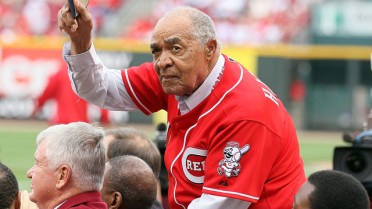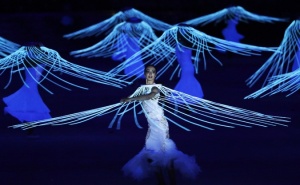I was a bit bed-ridden this weekend, so writing a post just wasn’t going to happen. There were…emissions. It wasn’t pleasant. I thought about doing just a photo post, but I took a nap instead.
Since the next Saturday is the first of March, the beginning of spring, I have one more shot to do a relevant post. I could cheat and just link to ones I already wrote years ago, but that just seemed half-assed; besides, I did that last year. So instead, I will find one more historical figure, one I didn’t know, or barely knew, and finish off my month with that.
Or…
Sunday, March 2nd is the night of the Academy Awards. Nominations came out back in the middle of January. Much of the discussion was about what films and actors might be nominated, not because of their particular talents, but because of their skin color. In 1939, back when it was still legal to discriminate against someone because of their ancestry, the Academy Awards did something unheard of – they gave an award to Hattie McDaniel, the actress who played “Mammy” in the movie “Gone With the Wind.ˆ” Since it was 1939, she couldn’t get the best actor/actress; no film with a black lead would ever get noticed, let alone nominated. But she could get supporting actress, playing a maid. The sort of roles available to black actors and actresses were quite often uncomplimentary†. Servants and slaves, always low intelligence, always exaggerated, comical, non-threatening caricatures. If you wanted to work though, you played the game. Play the game, win their confidence, and it becomes easier to talk them into meatier roles.
Shirley Temple Black did quite a lot of films when she was a little girl, and was the darling of Depression-era America. She did something that had never before been done – she danced on-screen with a black man. Not just anyone, mind, but the unparalleled Mr. Bill “Bojangles” Robinson. He had made a name for himself in Vaudeville, one of the earliest black performers to do so. He was cited as an inspiration for Sammy Davis Jr. and Gregory Hines, as well as Fred Astaire and Gene Kelly°. And here he was on screen, dancing with America’s sweetheart. More than once. I wasn’t around then, so I don’t know what kind of reaction the public had to this. It’s something worth considering that many of the segregation and anti-miscegenation laws were really aimed at keeping black men away from the white women. So in these movies, we have a black man dancing with America’s favorite little blond girl; it’s kind of a big deal, here. Perhaps the fact that he was in a subservient position (most commonly, an antebellum butler) made it more palatable to audiences. After all, they made four movies together. Shirley Temple herself really didn’t know much about the systemic racism, but as a child, sheltered as she was, why would she? What she did know is she had an adult who respected her, and she respected him; the skin color was secondary.
Fifty years ago, Sidney Poitier was the first black actor or actress to win Best Actor in a lead role honors. Because of the paths actors like Hattie McDaniel and Bojangles Robinson forged, he was able to choose roles that were uplifting, intelligent, strong. Took a lot of flak for it, too, people saying he was too milquetoast, whitewashed, non-threatening. There is a time to break down the door, and a time to slip in quietly; Sidney Poitier slipped in quietly. Because of his roles, because of the public’s apparent acceptance, the door was open for performers like Bill Cosby to play characters who just happened to be black, as opposed to just black characters. Yes, there’s a difference. One is a character that is not race- or ethnicity-specific, the other is one that it is too easy to turn into a caricature. Look at The Cosby Show – A lawyer and an obstetrician, upper-middle class, raising their five children, worried about homework and pot and pregnancy scares and dating, things anyone else would be worried about. Those roles were not black-specific – those characters could have been played by any race; which was kinda the point.
Still, it was almost 40 years before the next Best Actor/Actress award was won by a black actor – Denzel Washington for Training Day, Halle Berry for Monster’s Ball. There have been other winners, mostly of supporting Oscars (one other Best Actor for Jaime Foxx in Ray). There have been other actors and actresses who’ve won awards for movies with a racial theme of some sort, including Sandra Bullock for the highly-embellished movie The Blind Side. It’s supposed to be about Michael Oher, a defensive player on the Ravens‡; in order to get butts in the seats, they had to make it more about Leigh Ann Tuohy, the white woman who took him in.
This year could be different. With 12 Years a Slave and The Butler both being critically acclaimed and with several nominations, another bit of history could be made. If 12 Years a Slave, for instance, was to win best picture, it would be the first time a black director’s film won. Perhaps the result, if that were to happen, would be much like the climate after Kathryn Bigelow’s Hurt Locker wins, including Best Picture AND Best Director – which is to say not much different. Still, it was nominated for Best Director and Best Picture, along with seven other nominations, including supporting actor and actress and best actor.
I’ll be watching the Oscars this Sunday, in part because I do enjoy Ellen DeGeneres. Honestly, I’ll probably get bored not long after the opening number. But I’ll be curious to see what happens, what makes the news Monday morning.

_________________________
ˆStill trying to reconcile the whole liking the book and movie with the subject matter and the knowledge that only a few generations back, my ancestors were only 3/5ths human, by law
†Slight understatement…
°Who I still have a bit of a crush on
‡Ptooie! Who Dey!!! Okay, I feel better, now.








